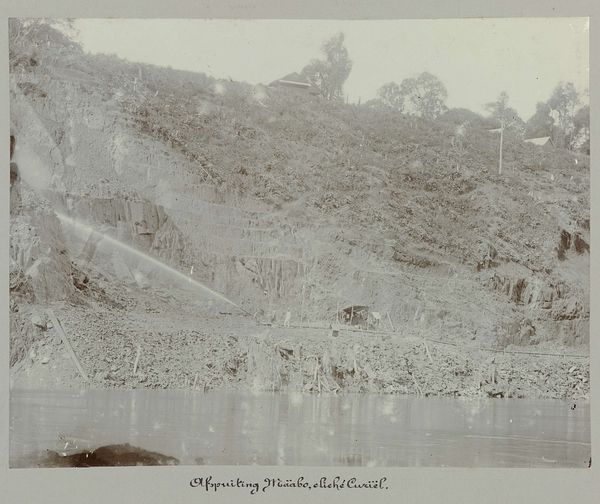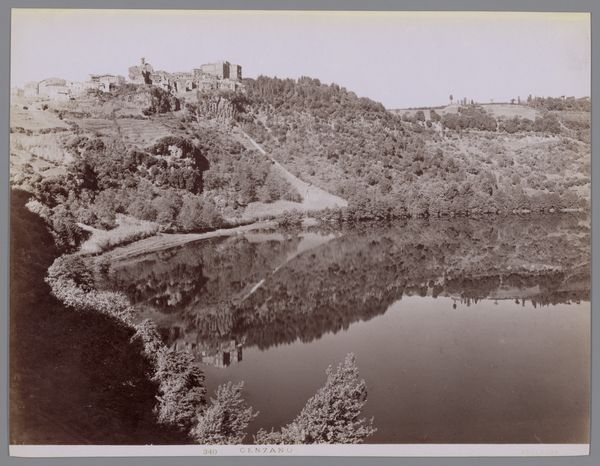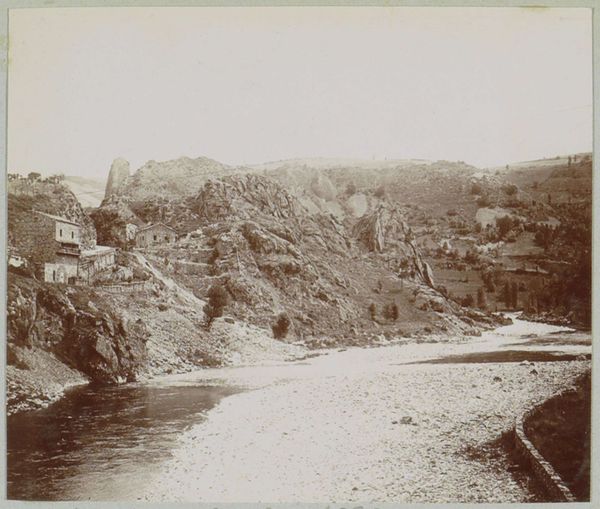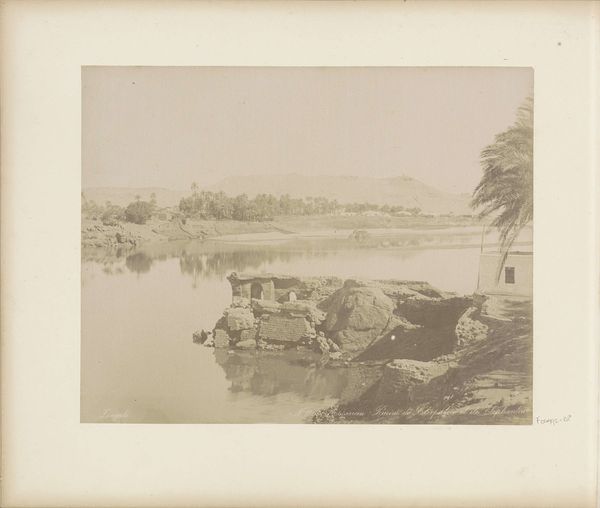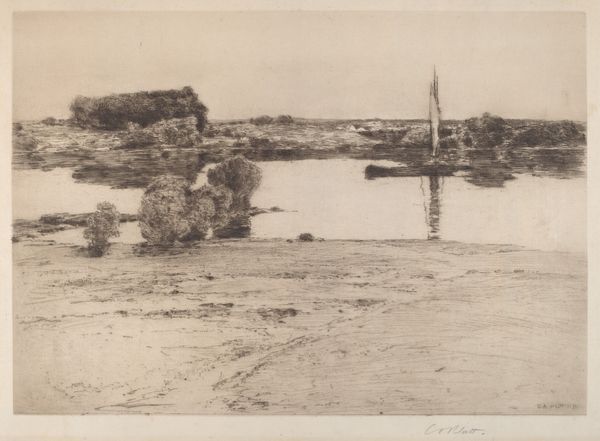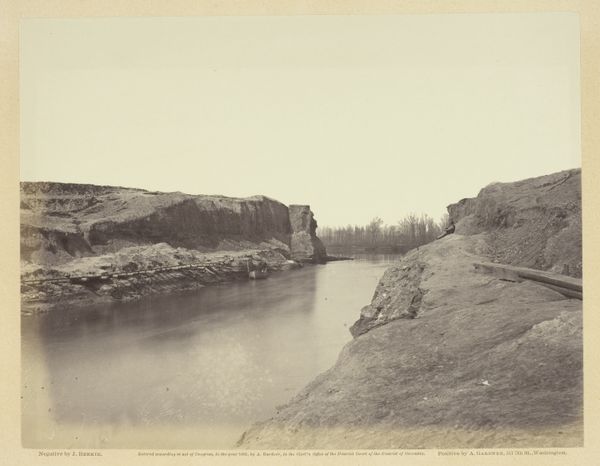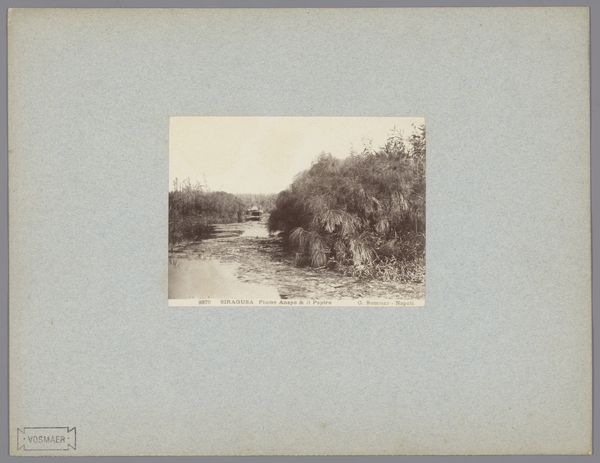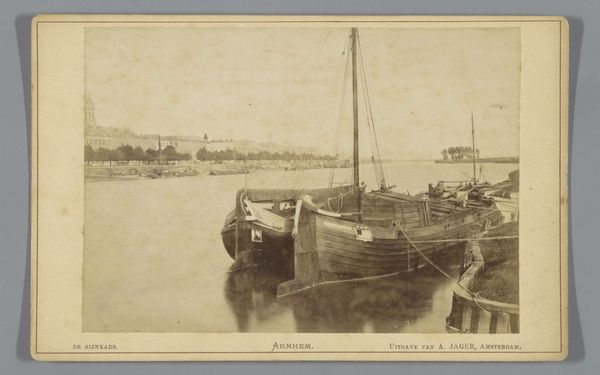
photography, gelatin-silver-print
#
landscape
#
photography
#
environmental-art
#
gelatin-silver-print
#
realism
Dimensions: height 122 mm, width 173 mm
Copyright: Rijks Museum: Open Domain
Editor: Here we have Augusta Curiel's "Afspuiten van den Määbo-berg," a gelatin silver print taken sometime between 1905 and 1910. It shows what seems to be the side of a mountain being washed away, with workers and boats in the foreground. There's a stillness, but also an underlying sense of destruction. How do you interpret this work? Curator: This image captures a moment heavy with the implications of colonialism and resource extraction. Consider the title itself - “Washing Away the Määbo Mountain.” It’s a blunt depiction of environmental alteration for, presumably, economic gain. We need to think about who is doing the "washing away" and for what purpose. Who benefits from this activity, and at what cost to the land and the Indigenous communities that might have relied on it? Editor: So it's not just a simple landscape, then? Curator: Absolutely not. Curiel, as a woman photographer in Suriname at the time, offers a unique perspective. How might her position as a local photographer influence her depiction of these activities? Does she critique, document, or perhaps even subtly resist the dominant colonial narrative through her framing and composition? We can view this as an early form of environmental art, not in celebration, but perhaps in somber observation, quietly critiquing the exploitation of the landscape. Editor: It’s striking how a seemingly straightforward image holds so much complexity once you start thinking about the social and historical context. I hadn’t considered the photographer's own identity and how that shapes what we see. Curator: Exactly. Examining the intersection of art, environmental change, and colonial history gives us a richer understanding, wouldn’t you agree? Editor: I completely agree! I'll never look at a landscape the same way.
Comments
No comments
Be the first to comment and join the conversation on the ultimate creative platform.

